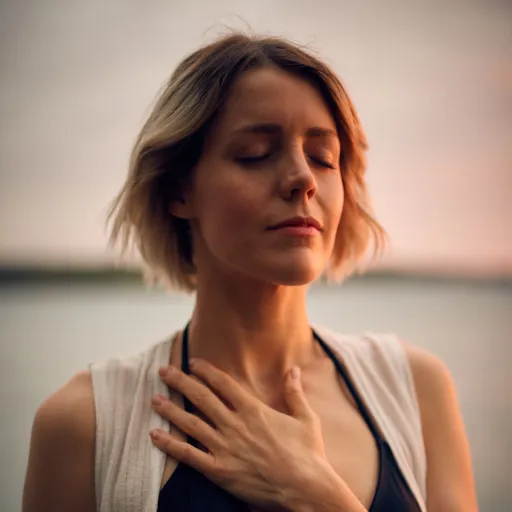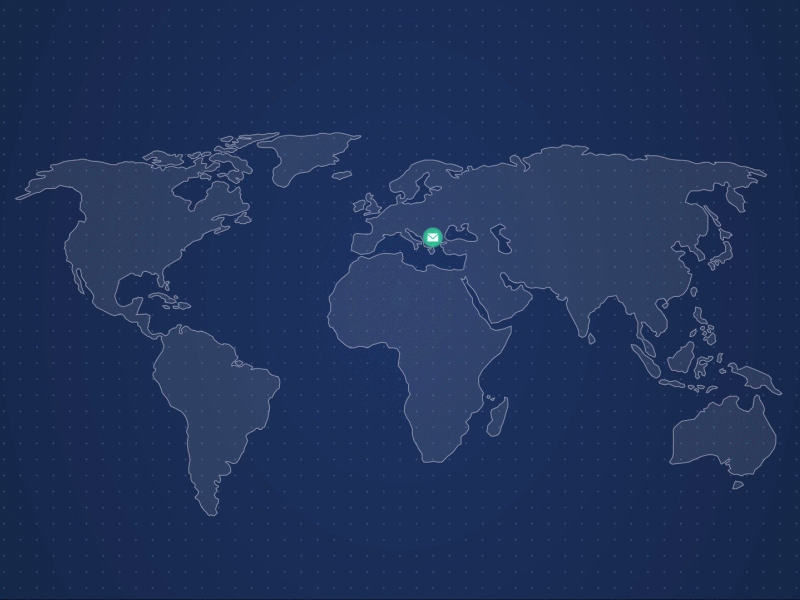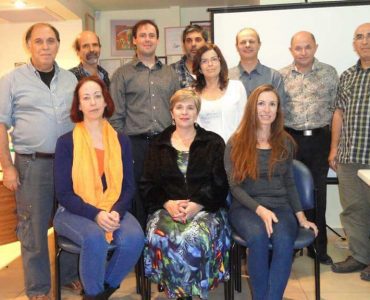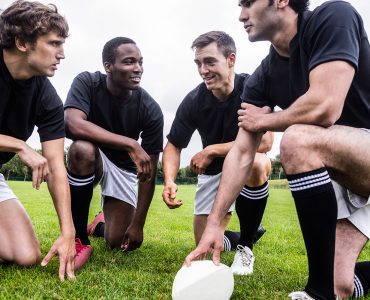Breathe Better, Live Healthier with Buteyko Clinic International
The World Leader in Teaching the Buteyko Breathing Method. Founded in 2002 by Buteyko instructor and author, Patrick McKeown.




What Is The Buteyko Method?
The Buteyko Breathing method is a breathing technique that aims to optimise breathing patterns for improved oxygen delivery throughout the body.
- Over the past 70 years, this technique has been used by hundreds of thousands of people for asthma and other respiratory issues, anxiety and panic disorders, and sleep issues.
- The Buteyko Method involves breathing exercises to decongest the nose, open the airways, improve blood circulation and improve oxygen delivery. Ironically, when we breathe too much air, we reduce the amount of oxygen that gets delivered to our tissues and organs which affects our body’s ability to function.
- If you have sub optimal breathing, the Buteyko Breathing Method is a simple, quick and safe technique to optimise your breathing for people with respiratory, sleep and mental health issues.
What Conditions Can Buteyko Help With?
Asthma, Rhinitis,
COPD,
Cystic Fibrosis

Asthma, Rhinitis/ hay fever, COPD
High Blood Pressure

Hypotension, Hypertension Slow breathing, coherent breathing, improved sleep quality
Insomnia

Reducing Insomnia
Snoring and Sleep Apnea

Stop Snoring and Sleep Apnea
Stress, Anxiety,
Panic Attacks &
Depression

Reduce Stress, Anxiety And Panic Attacks
Parents: How
Buteyko Can Help
your Child’s
development

Improve your child’s asthma, breathing and health
Principals Behind Buteyko Breathing Exercises
Patrick McKeown explains the physiology behind the Buteyko breathing exercises:
“Dr. Buteyko saw that sick people breathe hard. He asked, is the sickness causing the hard breathing, or the hard breathing causing the sickness? People are often told to take deep, full, big breaths in the belief that this will increase oxygen delivery to the tissues. If we look at the science, it doesn’t work that way. If you take big breaths that increase the volume of air beyond what it should be, you get rid of too much carbon dioxide. Due to the Bohr Effect (first described by the Danish biochemist Christian Bohr in 1904) this causes red blood cells to actually hold on to oxygen instead of releasing it. By practicing the Buteyko breathing technique and developing subtle, soft, slow, light breathing while also maintaining diaphragmatic, nasal breathing, you’re increasing oxygen delivery to the cells. This is where it’s going to transform health.”
Buteyko Services
Buteyko Clinic International provides the following services:

Zoom Clinics with Patrick

Books



Store


Online courses


Instructor Trainings Worldwide


Online Certification for Instructors


Buteyko Professionals International


Podcasts
Who Is Patrick McKeown?
Patrick McKeown is founder and Director of Training and Education at Buteyko Clinic International. Throughout his childhood and into his twenties, he suffered with severe asthma, breathing problems, poor concentration and disturbed sleep. His asthma left him hospitalized and on ever-increasing medication. Even an operation to relieve his nasal obstruction did not stop his breathing symptoms, sleep-disordered breathing and constant feelings of exhaustion.
More On How Buteyko Can Help
- How can Buteyko help with quality of sleep?
- How can Buteyko help with asthma?
- How can Buteyko stop your cough?
- How might the Buteyko Method help with exhaustion?
- Buteyko Method to help with Hay fever


It is widely recognized that breathing through the mouth during sleep reduces quality of sleep as the sleeper wakes up tired, with a dry mouth and often a stuffy nose.
Numerous studies report that individuals who breathe through their mouth during sleep experience lighter sleep and have an increased risk of insomnia, snoring and sleep apnea.


It is evident that children and adults with asthma experience symptoms of air hunger, or the feeling that they cannot take a satisfying breath. A natural response to alleviate this feeling is to breathe more air into the lungs, which is often taken through the mouth. It is also common for children and adults with asthma to experience nasal congestion as inflammation from the lungs can travel to the nose.
With increased nasal stuffiness (rhinitis) nose breathing is replaced by mouth breathing. Herein lies part of the problem, as the inhalation of unconditioned cold dry air into the lungs causes inflammation of the lungs. A vicious circle ensues as asthma causes one to breathe harder which in turn contributes to asthma. To improve asthma control, it is necessary to improve breathing patterns by learning to breathe through the nose and normalize breathing volume.






Carbon dioxide has been studied for the treatment of allergic rhinitis (hay fever) to good effect (Journal Allergy Clinical Immunology Practice 2017). It is important that children and adults who suffer from hay fever learn how to decongest their nose, switch to nose breathing and normalize their breathing volume.
Dr. Konstantin Pavlovich Buteyko
The Buteyko Method, (pronounced Boo-tay-ko) was developed by Ukrainian doctor Konstantin Buteyko. While studying medicine at the First Moscow Institute of Medicine. Dr. Buteyko observed a relationship between breathing and a person’s state of health. As a person’s health deteriorated, their breathing became faster, more upper chest and was often through the mouth. Buteyko wondered whether it was the increased sickness that changed breathing patterns or whether it was the change to breathing patterns that contributed to sickness. With the theory available at the time, he studied the role of carbon dioxide in the human body.
The Bohr Effect which was discovered in 1904. Stated that the pressure of carbon dioxide in the blood influenced the release of oxygen from the blood to the cells. Based on this, Dr. Buteyko began teaching his patients. To breathe through their nose and to deliberately slow down their breathing to create a feeling of air hunger. With many of his patients experiencing improvements to their health. The ‘voluntary elimination of deep breathing method’ was born. When his work arrived to the West, the name was changed to the Buteyko Method. In the early 1980s, Buteyko breathing received approval of its widespread use in Russia from the State Medical System. Konstantin Buteyko passed away on the 2nd May, 2003 aged 80 years.
The Buteyko Method in the West
While commonly known as the Buteyko Method, it is also referred to as the Buteyko breathing technique. With the fall of the Iron Curtain in 1989, the Buteyko Method first arrived from Russia to Australia in the early 1990s. There it received attention as a treatment for asthma and despite initial skepticism, the first clinical trial in the Western world investigating the Buteyko technique as a treatment for asthma took place at the Mater Hospital in Brisbane in 1995.Results were published in the Australian Medical Journal (Med J Aust 1998; 169 (11): 575-578). Subjects applying the Buteyko breathing exercises experienced significantly improved quality of life, 90% less need for bronchodilator medication and 49% less need for preventer steroid asthma medication at twelve weeks follow up. The control group which was taught the in-house hospital program at the Mater Hospital in Brisbane experienced no change.
More on learning Buteyko Breathing Method
How to learn the Buteyko Method
There are a number of ways to learn the Buteyko Method. Patrick McKeown has written popular self-help Buteyko books and online courses for a number of complaints including stress, anxiety, panic attacks, asthma, snoring, sleep apnea and childhood mouth breathing. Patrick also provides live online clinics which can be accessed from anywhere in the world where you can learn firsthand from one of the world’s leading Buteyko instructors.
What are the Buteyko exercises?
At Buteyko Clinic International we teach breathing exercises through the following format:
- Control pause measurement- (provides feedback of relative breathing volume)
- Nose unblocking exercise by holding the breath until strong air hunger is experienced
- Three approaches to Buteyko breathing exercises- a deliberate reduction of the volume of breathing by relaxation of the breathing muscles until a light feeling of air hunger is experienced.
- Applying Buteyko during your walk and physical exercise
- Walking with breath holds to create air hunger from easy to strong
- Steps exercise
- Light steps for persons with panic attacks, anxiety, and asthma symptoms
- Medium intensity steps tailored to the child, teenager or adult
- Strong intensity steps tailored to the child, teenager or adult
- Many small breath hold exercise to help stop asthma or panic attack symptoms
- Advice on breathing during sleep, physical exercise, diet and more
The Buteyko Method is a lifestyle choice. It involves re-educating your breathing pattern to improve blood circulation, oxygen delivery, and airway functioning.
Why Learn with Buteyko Clinic International?
Founded by Patrick McKeown in 2002, the mission of BCI is to disseminate the work of Dr. Buteyko in a thorough, understandable and accessible fashion throughout the Western world. Through our books, DVD sets and online courses, adult and children’s courses, live online clinics and trained instructors worldwide, we have reached out to hundreds of thousands of children and adults teaching them to breathe better for optimal health. BCI certified instructors now practice in over 40 countries worldwide, making us one of the largest Buteyko training organizations in the world.
How does Buteyko differ from other breathing techniques?
Breathing techniques as taught by some yoga and Pilates teachers as well as stress counselors encourage the student to take more air into their lungs. The instruction is to ‘take a deep breath’, and this is demonstrated by inhaling a large volume of air into the body. If one were to take ten of these big breaths, a feeling of light-headedness or dizziness may be experienced. This is not due to an increase of oxygen delivery to the brain. In fact, it is because of the opposite.
When one breathes more air than what is required, blood vessels constrict and less oxygen is delivered. Ironically, to open up your blood vessels which amount to approximately 100,000 miles in the human body, it is necessary to soften your breath, to slow it down so that you take less air into your lungs for a period of time. In short, this is the complete opposite to the common instruction of taking a deep breath.
With Buteyko breathing, the aim is to restore nasal breathing and normal functional breathing patterns. While practicing the Buteyko breathing exercises, the aim is to take less air into the body so that a feeling of air hunger is created. As the gas carbon dioxide is the primary stimulus to breathe, the feeling of air hunger signifies that carbon dioxide has increased in the blood. With the increase to carbon dioxide in the blood, circulation improves and the red blood cells release oxygen more readily to the tissues and organs.
Fundamentally, Buteyko breathing is about:
- Relieving stuffiness of the nose so that you can breathe through it easier
- Opening the airways in the lungs so that you stop coughing and wheezing
- Improving blood circulation for better oxygen transportation throughout the body
- Improving delivery of oxygen to the tissues
- Achieving better sleep and an increased state of calm
Nose breathing vs mouth breathing
Why breathe through your nose?
The normal mode of breathing for human beings is in and out through the nose. A gas called nitric oxide is produced both inside the nasal cavity and the paranasal sinuses. As each breath is drawn through the nose, nitric oxide is carried into the lungs. There it performs a number of very important roles including the sterilization of incoming air; the opening of the airways; and improved gas exchange from the lungs to the blood known as ‘ventilation-perfusion’.
Also, in order to activate the diaphragm, it is necessary to breathe only through the nose. Mouth breathing causes greater activation of the accessory muscles including the scalene and sternocleidomastoid. Mouth breathing is an inefficient way to breathe and reduces oxygen uptake in the blood, activates the stress response due to faster breathing, disturbs sleep and reduces oxygen delivery to the cells.
How mouth breathing affects children
Approximately 50% of studied children persistently breathe through their mouth. A myriad of evidence exists which shows that children who habitually mouth breathe experience reduced quality of life, reduced quality of sleep, increased risk of learning and speech difficulties, as well as the poor growth of jaws and face. A growing child should have their lips together with their tongue resting in the roof of the mouth. With the tongue in the correct resting posture, the jaws develop into a wide u shape helping to ensure a wider facial structure, straight teeth, and good airways. If the child is breathing through his or her mouth, the tongue rests midway or on the floor of the mouth resulting in reduced development of the face, airways and sometimes results in crooked teeth.
Stress, anxiety and panic attacks
Chronic hyperventilation is often a contributory factor with panic attacks, agoraphobia, and anxiety. Irregular breathing, breathing through the mouth and breathing too much air contributes to the agitation of the mind as well as reduced oxygen delivery to the brain. Traditionally, persons having a panic attack were instructed to breathe in and out of a brown paper bag. The purpose of this, while not entirely safe was to help normalize carbon dioxide levels in the blood. It is efficacious for persons prone to panic attack and anxiety to learn how to reverse hyperventilation.
The exercises from the Buteyko breathing technique are specifically developed to reverse chronic hyperventilation syndrome. Furthermore, the exercises can be tailored to help persons who have difficulty focusing on their breathing or have a strong fear of a feeling of suffocation – symptoms that are readily observed in panic disorders.
BECOME A CERTIFIED Instructor
Train as a Buteyko instructor with Buteyko Clinic International, and provide your clients with a simple and scientific technique to take control of their health. No career prerequisites, no annual license fee, just a commitment to support your personal and professional growth at every point of your Buteyko career.
What People Say
Mary B. Geidel
Mr. Mckeown, I started this technique about 2 months ago. I got your book “Anxiety Free” and it has really really helped me . I am stronger, less anxious,more at ease, I sleep better. Thank you for all of this. I look forward to my excersises every morning. I started with a control pause of 8 to ten and now I am up to between 17 and 20. I am a former smoker, 54 years old. I want to share this wonderful method with all my friends. Thank you again. This is life changing.
Louise Hibbert
I read Patrick’s book in 2010 after being hospitalised with asthma for 4 days. It was an amazing discovery for me as within six months I was able to stop using all my medications. Most of the time I have my asthma completely under control and last Saturday I climbed Snowdon! Thanks again for helping me change my life!
Patrick Holford, Author & Nutritionist
Thousands of people have found that breathing training has helped them to control, and even overcome their asthma. If you want to teach yourself this valuable technique I thoroughly recommend you read Asthma Free Naturally by Patrick McKeown
Brenda McKinnon Lamont
I Skyped with Patrick many times and he watched me breathe and helped me to follow his recommendations in his books. I did his exercises every day for 6 months. My difficulty to breath problems are gone and no allergies this season. A pure miracle!
Gaye Lawrence
This book and CD is really helpful for people suffering with breathing problems. Very easy to follow and understand useful tips for people with COPD
Professor John Fenton, ENT Consultant, Limerick Regional Hospital
In our association during the past 3-4 years on a purely anecdotal basis, I can say that the vast majority of all of my patients have received great benefit from their nasal symptoms following instruction at Patrick McKeown’s workshops
Colin, Amazon Customer Review for Close Your Mouth: Self Help Buteyko Manual
Close Your Mouth is a great book for me because it taught me a way to breathe that was different than anything I had been taught or had practiced before. The reduced breathing techniques gave me a sense of relaxation and ease that was great. It actually felt like I was breathing correctly for the first time in a long time. Like breathing actually filled me up with oxygen to optimum levels. The tape on the mouth at night was great. After a day of using the practices I put the tape on at night and the next morning woke up and popped out of bed full of energy and feeling totally refreshed. It was amazing really. I don’t recommend putting the tape on without doing the exercises during the day first, because your body won’t know what it is doing and it will just be really uncomfortable.
Julian Barry -Working with Financial and Business Leaders delivering Pan-European business transformation and integration projects. UK
Patrick has delivered exceptional results for me on a personal basis, through a high level of diligence, knowledge and patience. I thoroughly recommend Patrick and his Buteyko programmes for anyone wishing to improve their sports performance or asthma without prescription medicine.
Eileen Bennett – Founder and CEO at Horses Connect http://www.horsesconnect.com/
Patrick McKeown is a consummate professional. He is passionate about helping people learn to overcome asthma and is living proof that the Buteyko method works
CLIENT TESTIMONIAL
I have been engaged in exercise since high school. I started playing racquetball at age 25 and played into my mid-fifties. I have always enjoyed jogging and have participated in 10k’s, 5k,s and some half-marathons throughout my life. Five years ago while running at a challenging pace, my breathing totally slowed down and I could not catch my breath. After resting for a month and starting back up, the same result.For the next four years I looked for the answer. I was diagnosed with exercise induced asthma. Every time I would start back up jogging, my airways would tighten and it would last up to a month. I tried everything, e.g. maintenance inhalant, rescue inhalant, a breathing nebulizer, Himalayan rock salt inhaler. Nothing worked for over four years.Finally I came upon a book describing The Buteyko method discovered by Professor Konstantin Buteyko. Professor Buteyko suggests that we are overbreathing through our mouths and that we have to retrain on how to slow down our breathing through our noses. I read the book and understand the theory but because it takes some discipline I went to the Buteyko Web Site and found a Practitioner in the Cincinnati area. His name is Greg Rittenhouse. There was a fee for the initial visit but Greg is so dedicated and sincere in wanting to see a positive outcome that he has been available continuously to answer any questions that I may have. It has been six months and my Controlled Pause has increased demonstrably and my jogging has returned in grand style. Miracles do happen.
Vishnu J
Patrick is my hero! He is helping millions to live normally.
Mark Cucuzzella MD FAAFP, Professor at West Virginia University School of Medicine
“The Oxygen Advantage truly changed how I treat patients, and how I work with athletes who are having issues with their breathing. It has also been a powerful influence on my own life and health.
Patrick’s new, greatly expanded book will allow me to apply his clinical experience and science better in the world of chronic disease, which I deal with every day. I am grateful for this encyclopedic work, which is loaded with very simple and practical techniques that anyone can learn to improve their health and performance.”
Mim Biem
Australia’s leading naturopath and breathing coach calls The Breathing Cure: “THE definitive book on breathing.”
LAURA REYNOLDS
I didn’t realise the detrimental effect of breathing through the mouth during rest and the importance of nasal breathing. Implementing the exercises resulted in improved health and in turn better sports performance.
Jen Li Sheng
This is one of the best courses I have attended, and offered so much more beyond the book in terms of information and practical application. Patrick breaks down the physiology of breathing, and how it affects performance, health, and physical well being.
Professor John Fenton
I can say that the vast majority of all of my patients have received great benefit with their nasal symptoms following instruction at the workshops.
Andrew Kacsor
The Oxygen Advantage has helped my Olympians become more aware of their breathing. We practice nasal breathing during foam rolling, warm ups, cool downs and during certain prescribed exercise.
Ten-year-old Lorcan
Before, I missed football, parties and swimming. Now I am able to do everything I couldn’t do.
Frankie Sheahan
Your approach made a significant difference to my breathing during sports performance and throughout my daily life. It is simple, makes sense and should be taught to all.
Carole Nelson
Hi Patrick, I did the Buteyko course with you in Kilkenny and Dublin at least 10 years ago and want to let you know how it changed everything! No more bronchitis, asthma, sinusitis, colds. Brilliant! I took a look at the Feldenkrais summit. ..I’ve been using both Feldenkrais, Alexander technique and Buteyko in all my vocal and saxophone teaching for a while now.
Anyway just want to let you know how well it went for me and how grateful I am.
Best wishes, Carole Nelson www.carolenelsonmusic.com
You May Like
There are unanswered questions and concerns around the subject of compulsory mask-wearing in primary-age children at school. Wearing a face...
Read MoreIt is with deep sadness that Buteyko Clinic International received news that Dr. Michael Gorbonos passed away on April 5,...
Read MoreEffects of Buteyko Breathing Technique on Physiological and Psychological Parameters among University Football Players Dr. Sarika Chaudhary*1, Sonakshi Khanna2, Umesh...
Read More





